Long Live the Disabled Artist, Long Live the Disabled Artist(s)
On weaving a life as a disabled artist: sustaining friendships, navigating systems, carrying grief, and advocating for each other
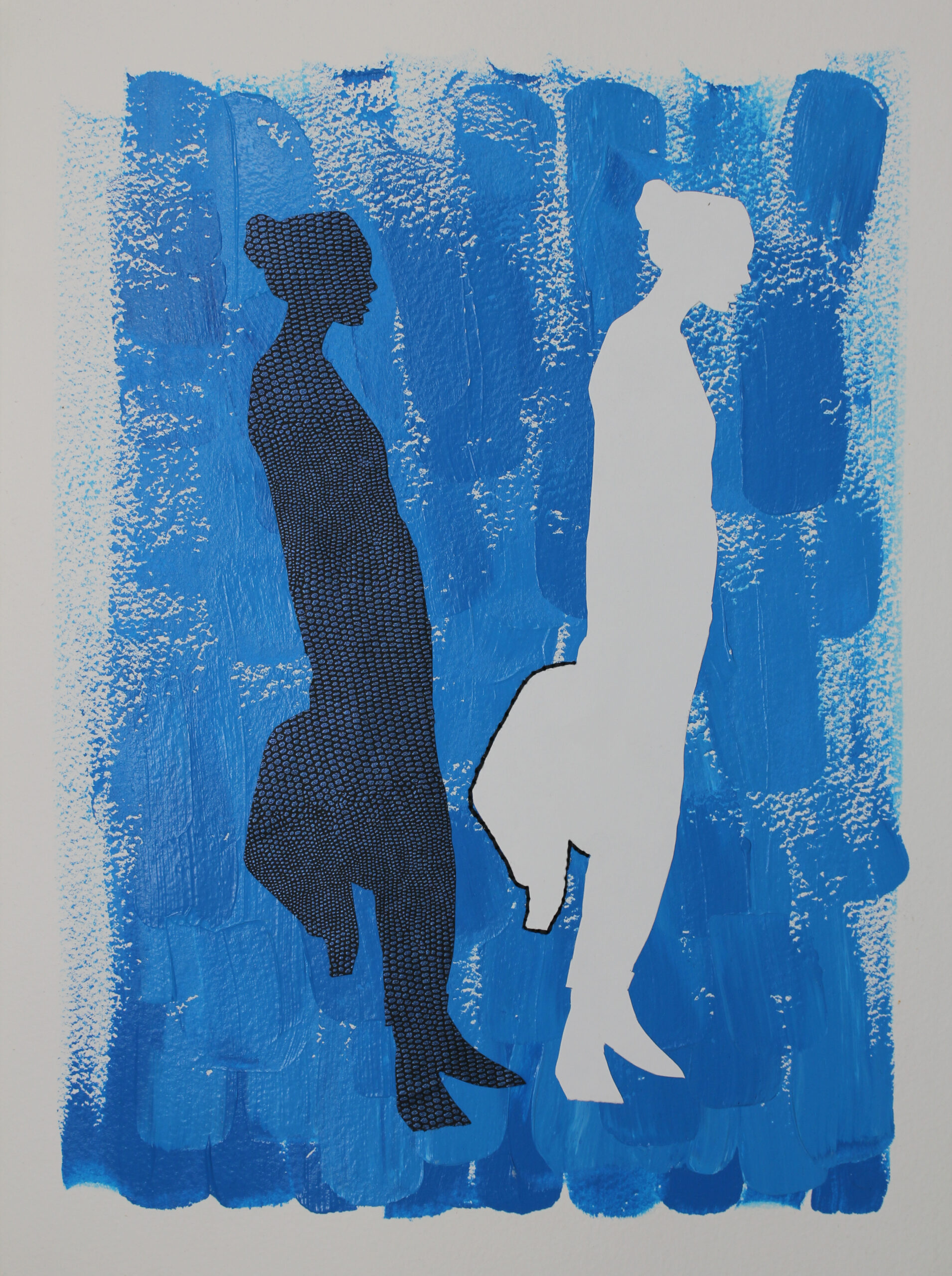
On a June night this summer, one of those days the air quality in Minneapolis was the worst in the world, a friend texted asking to shoot photographs from my rooftop. It was still hot yet, and we thought the best images might happen later on at dusk. I lay down for a bit: one of the realities of migraines for me is that often I just feel better horizontal. I had a podcast on, and after a while looked at my phone and realized I had a missed call from Northern Ireland. I listened to the message. I was to call the husband of one of my oldest friends. I had last seen her, and him, in August, when she was briefly back in the States. We had met in the late 1990s as new seniors in Lit at the Arts High School. As always, seeing her felt like home, even though in August 2022 I remember telling close friends I was more okay than I had been a few weeks before, but I didn’t recognize myself.
I arranged to call Stephen back from a friend’s apartment. I live in an artist loft and I’m grateful for close people nearby. He’d sounded so tired that I didn’t think it could possibly be good news. It wasn’t. It was a short call. He was with family. I was the first person in the States he’d reached; it was very late there. She had been feeling unwell, called an ambulance, and did not survive. The symptoms sounded like something to do with her heart, like always. Stephen said he was going to try to sleep. I told him I loved him, told him I loved Sarah, told him I was so sorry. Words in moments like this have content, but the message is deeper, about history, aloneness, distance, care. I stepped out of my apartment and the phone rang. It was my photographer friend. We went up to the roof. I told him I had gotten bad news, was grieving.
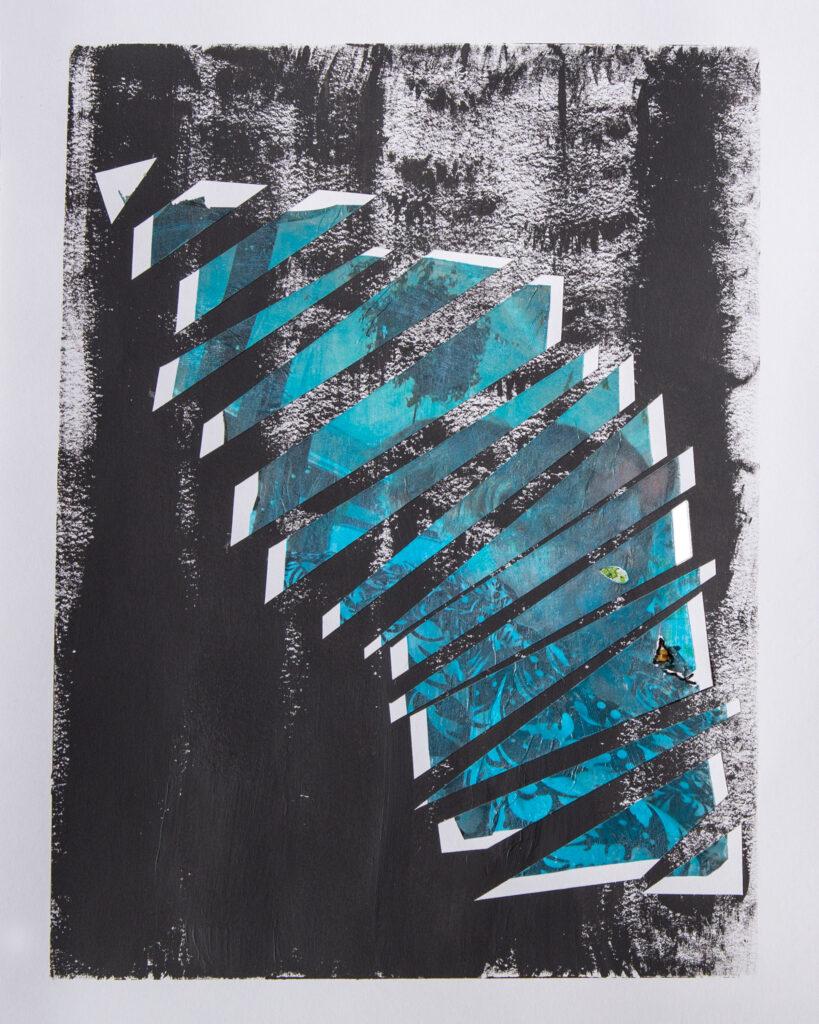
We Die (and Live…)
As teenagers Sarah and I had loved Uptown. We had written many Saturday nights, staking out a table in a corner of a pizza place on Hennepin Ave that had lots of counter traffic. We would take out our notebooks, set a timer for 10 minutes, and go. We’d read to each other. We’d prep submissions together, we went to see Patti Smith read from her poems in the chapel of a local college, we went to see punk shows at the Foxfire Cafe, we went to readings in the old Borders in Uptown, we’d go to readings at Magers & Quinn, the legendary bookstore still there. We were fast friends perhaps due to shared social awkwardness. She was certainly more of a musichead than me. The things that were superficially the same about us were points of context, but not really commonalities. We both had long blonde hair, parted in the center, wore flannel and jeans, and had both grown up far outside the metro.
What Sarah and I had in common, in addition to both being writers dedicated enough to become new seniors at the Arts High School, was that a week before my best friend from home died, Sarah went in for her first pacemaker. I was emotionally fragile; people kept asking if I’d stay the whole year. I didn’t know much for sure that September, but I knew I was staying at Arts High. A few weeks after Jes’s death, Sarah was back in class. I was so glad to see her. As the school year continued it became clear that migraines were front and center in my life.
I graduated, and had gotten accommodations that made that possible. I was disabled, even though I didn’t know the word applied to me. Sarah also didn’t use that word then. It was later, in our mid-20s when we reconnected that we spoke often of how living with very challenging health conditions made precarity part of our lives. For Sarah, that meant that she decided to study for her master’s degree in the U.K. so that she’d have access to healthcare. In the U.S. at that time, pre-Obamacare, even changing jobs was dangerous for a person with a disability. Your new insurance from your new job would not likely cover any prior conditions until a window had passed, maybe three months, maybe six months. She wanted surety, and so headed off to Northern Ireland. She earned a master’s and made a career and a life.

What Precarity?
In my early 20s, I had picked up post-traumatic stress disorder, eating disorder, and bipolar disorder diagnoses to add to the migraines. Every conversation I ever had with Sarah when we were adults included contingency. This is what I’m planning if I’m still okay then. This is what I’m planning, if nothing happens. It seems to be that it is immensely easier to speak of disability, of the reality that we might die earlier than expected, with other people who are disabled, than it is with those who don’t experience precarity this way.
And now, at this point in this essay, I imagine a reader—an abled reader—asking, “But Alison, what precarity do you, do people with disabilities, experience?” Well, in the weeks I was writing this essay, the glasses I use to prevent migraines and to treat related light sensitivity broke. These are the glasses that I cannot leave my apartment without, that I wear near constantly when not in my apartment.
When I was a child first having migraines I won a pediatric neurologist. I remember sitting in a tiled exam room, where all the surfaces were metal or tile, waiting and waiting for the doctor to come in, listening to other patients, literally other children, in other similar exam rooms crying, shrieking, and screaming. At the point in my appointment where the specialist asked me if I had any questions I asked, with some tonal softeners, like I’m sorry to ask this, but, “What are you doing to them?” He said to me, “Well, not everyone is as high functioning as you…” and then trailed off. I would come to think of that phrase (which I’ve certainly heard again) as a threat wrapped in a compliment. You’re not like them, but you could be. I know it’s one of the reasons I’ve become someone who sees my migraines as not dissimilar to Sarah’s heart condition, as not dissimilar to someone verbalizing discomfort in another exam room.
There is a joy in walking through a museum with a tag marked “medical” hanging from my backpack on a sensory-friendly day, knowing that I have everything I need right with me, knowing that I wouldn’t be out if another disabled friend hadn’t pushed me to be out.
There is also the joy of running into another person, who has had tremendous impact in how funders understand disabled artists, leaving a celebration. I’m arriving with friends, and thrilled to see them. They are leaving with their friends because of symptoms. The joy of seeing them, and gratitude they are with their friends, grateful they have folks who care. And also feeling afraid for them, for their vulnerability, for what their condition could progress to. It’s a Saturday in June, and a normal day like all the other days.
To Be Very Public Disabled
For me, as a person who has made disability very public in my work, sometimes I am afraid I will never do enough. That I am not able to listen, to hear, to sit, to draw, to read, to be in community enough. Quite a long time ago, probably 15 or 20 years ago back in the early 2000s, I stopped counting how many disabled people I know who’ve died in their 20s, their 30s, their 40s, their 50s. I’ve also been to many funerals of people in their 70s or 80s where more than one person said to me, “They were so young, they had good years left, this is so sad.”
It may be sad when I die; it may be too young. I’m sure there will be more work I’ll want to do, whether work that has impact on how others view me and others with disabilities, or work that splashes color or fragmented language in a way that is nothing but satisfying.
People also tell me that my work, especially when I’m specifically and personally vulnerable, normalizes them and makes them able to imagine a bit more room to be so vulnerable. I have more to say and share. I also have been working for the last year and a half on research into a woman who was a patient at Minnesota’s Second Hospital for the Insane in Rochester in the 1890s, who wrote hundreds of pages of letters with the goal to win her release, and I hope that as this work becomes public, her words may have impact into a variety of systems that are still with us.
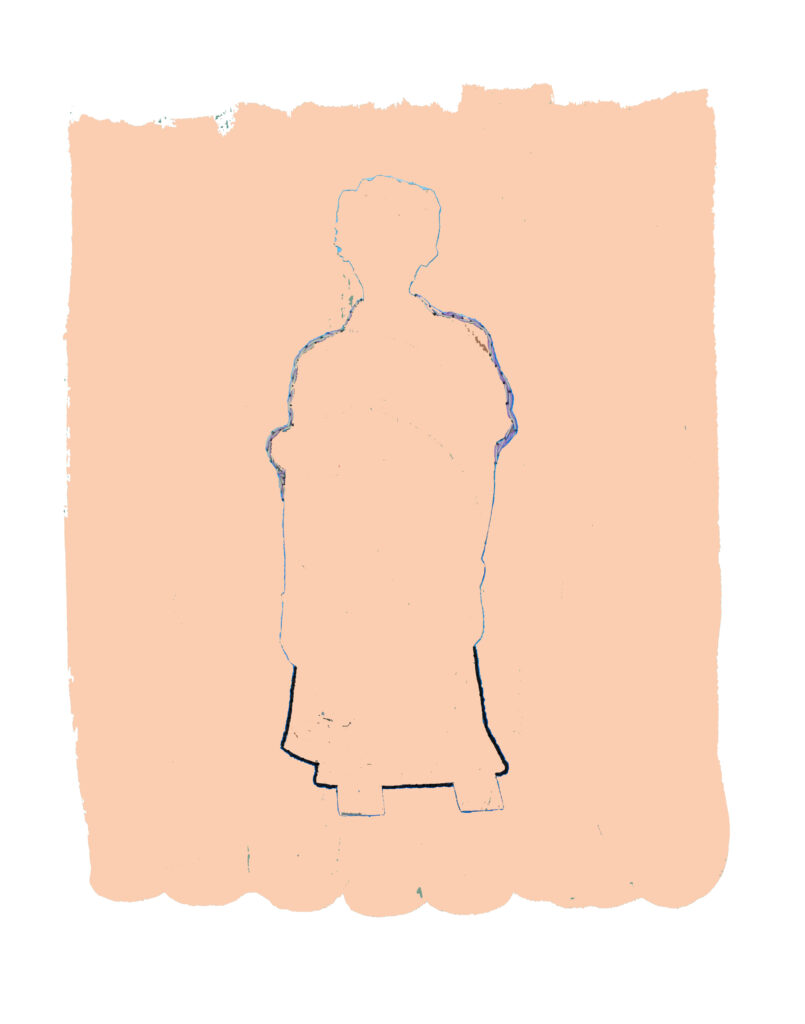
Alison Bergblom Johnson, A Lady Wears Pearls and Gloves, 2023. 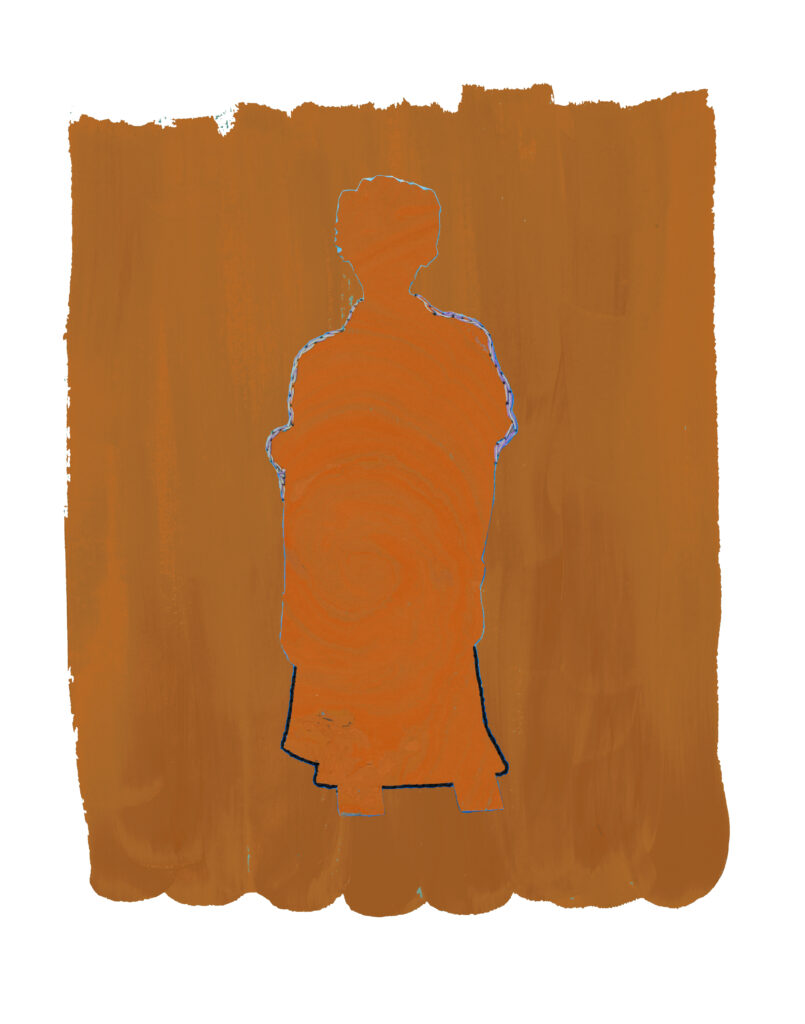
Alison Bergblom Johnson, A Lady Wears a Dress Like the Wallpaper, 2023. 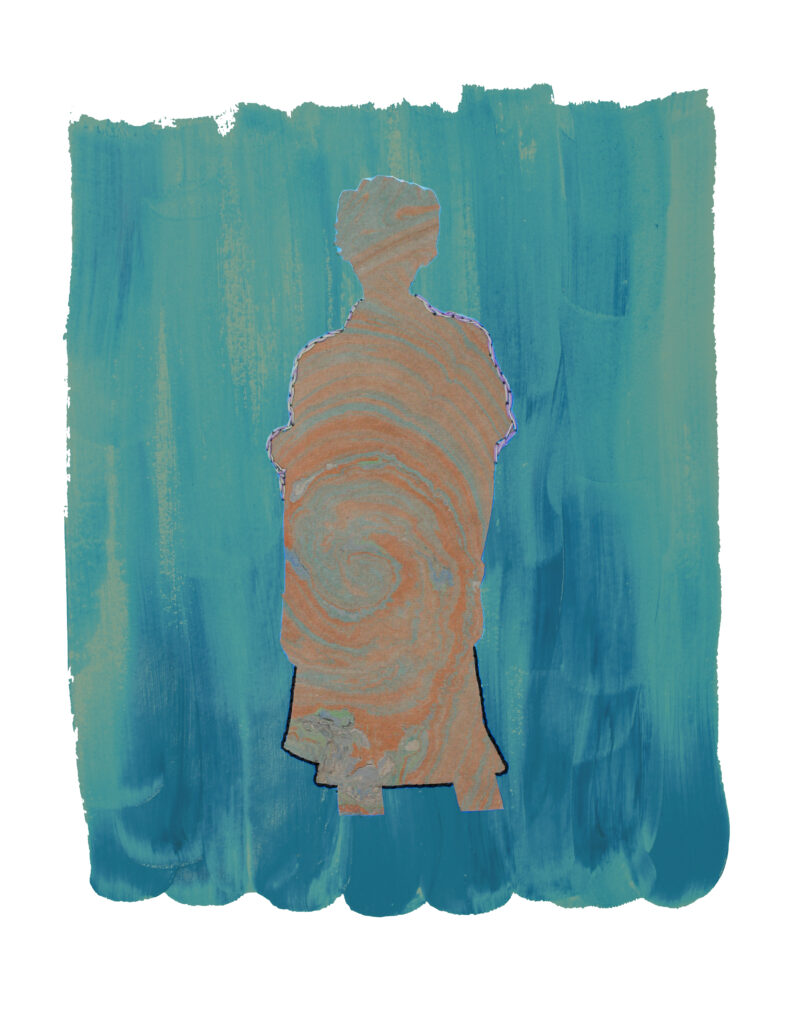
Alison Bergblom Johnson, A Lady has One Coherent Sense of Style She Never Strays From, 2023.
Could We Have a Coronation of the Many?
I was meaning to check in with Sarah in early June 2023. I wanted to tell her how angry I was that Charles was now King, that his coronation had been the month before, and Diana, who had been Princess of Wales, who had been open about her mental health struggles, including life with an eating disorder, who had been one of the first celebrities to physically embrace people hospitalized with AIDS, even when the stigma was so extreme. I was so angry Diana was dead, and dead for a very long time, since before I knew Sarah, and now Charles was King. I never got to say that to Sarah.
Everyone in this essay, every character other than Stephen, Sarah’s husband, King Charles, and the neurologist are disabled. We are living while navigating daily challenges, and we take photographs on rooftops, figure out how to replace our assistive devices when they break even though insurance doesn’t cover that, we are nudging each other out of the house and into museums and coffee shops and streets.
What I do know is that I will do what I can until I can’t. And others, disabled and not, will do what they can. I notice slight thaws in understanding from abled people, especially in the last year or so. What others are doing is incredible: think Zoe Cinel’s curation of Chronicles of the Chronic at the Rochester Art Center (disclosure: I served on the jury for this exhibition), think Madison Rubenstein’s disability-centric art focus, think the panels focused on artists with disabilities I’ve hosted with Springboard for the Arts featuring Nicole M. Smith, Esther Callahan, Minda Mae, and many, many others. I think of Metropolitan Regional Art Council (MRAC) and Weisman Art Museum hosting panels featuring disabled artists.
And I will do what I can while I can, and rest when I can. And so will you.